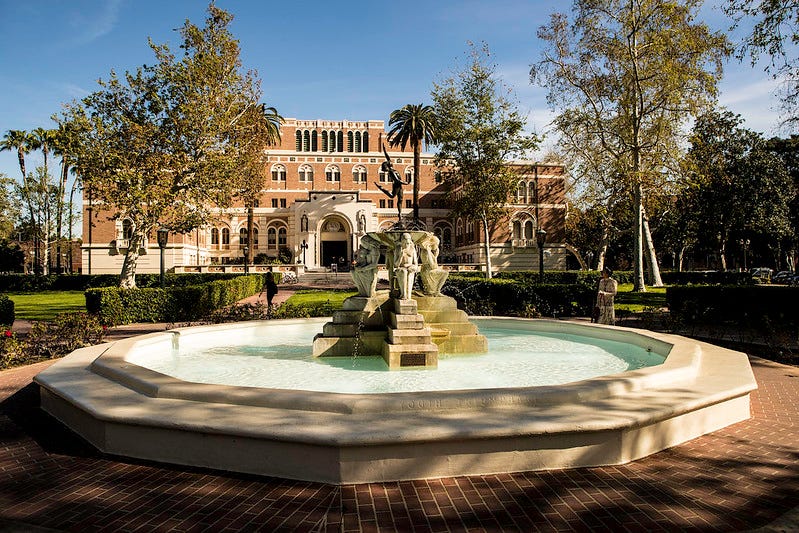Cultural Communities in LA
Los Angeles is more than just palm trees, sunshine and what we see on TV. It's one of the most culturally diverse cities in the world. With over 140 nationalities and 224 identified languages spoken, LA is a living, breathing mosaic of communities, each contributing to the city’s dynamic identity. This allows our students to not only experience the world on our campus, but throughout the city as well. They’re able to take advantage of the yummy food, music, festivals, events, and more. The City of Los Angeles recognizes twelve cultural communities that includes Chinatown, Historic Filipinotown, Koreatown, Leimert Park Village, Little Armenia, Little Ethiopia, Little Italy, Little Tokyo, Mariachi Plaza, Olvera Street/El Pueblo, Sawtelle Japantown and Thai Town. From Koreatown to Little Ethiopia, Japantown to Mariachi Plaza, every corner of the city tells a different story. Let’s get to know some of them!
Koreatown
Just a few miles west of Downtown and a short drive from campus, Koreatown stands out as one of the most densely populated and vibrant neighborhoods in LA. What began as a small enclave in the 1960s has grown into a bustling hub of Korean restaurants, karaoke bars, supermarkets, and spas. K-Town is also a cultural anchor, offering everything from traditional Korean medicine to churches and community centers that support multiple generations of families. It is also home to the Seoul International Park located on Normandie and Olympic and is the center to the annual Los Angeles Korean Festival. Interestingly, Koreatown is also one of the most ethnically diverse neighborhoods in LA, with a strong presence of Latino and other Asian communities living and working alongside their Korean neighbors.
Little Ethiopia
On Fairfax Avenue near Olympic Boulevard lies Little Ethiopia, which is home to a collection of Ethiopian restaurants, markets and businesses that serve as a hub for the broader East African diaspora. Destination Little Ethiopia’s mission, a community project, is “to transform the Little Ethiopia stretch of the Fairfax corridor into active, dynamic hub for small businesses while spotlighting preserving this unique and vibrant community.” They’ve held events including Amharic language instruction, book tours, paint events, First Thursdays Little Ethiopia events, and more.
Little Tokyo and Historic Filipinotown
Little Tokyo, one of only three official Japantowns in the United States, is a cornerstone of Japanese American culture and history. It’s also a quick metro ride away for students and can use their U-Pass to get there. It’s a place where students can attend a Buddhist festival, explore the Japanese American National Museum or savor handmade mochi. The community has faced decades of displacement and redevelopment pressures, but grassroots efforts continue to preserve its cultural heart.
Nearby, Historic Filipinotown (HiFi) offers another rich layer to LA’s Asian American fabric. While Filipinos are one of the largest Asian ethnic groups in the city, their cultural visibility has long been under-recognized. In recent years, however, there's been a resurgence in celebrating HiFi’s identity through public art, food pop-ups, and cultural festivals, helping to elevate the Filipino American experience in LA.
Chinatown
LA’s Chinatown, also a quick trip from USC students, is full of life and color, from red lanterns hanging overhead to bustling herbal shops and dim sum restaurants. It’s a gateway into Chinese American history and is evolving constantly. Chinatown is home to several cultural and community events including the Chinatown Film Festival, LA Food Tours, KROQ Summer Nights and the annual Lunar New Year Parade.
Little Armenia
Located in the heart of East Hollywood, Little Armenia is more than just a cultural district; it’s a sanctuary for Armenian identity, history and resilience. Officially recognized by the City of Los Angeles in 2000, the neighborhood was established to honor the contributions of Armenian Americans and to provide a cultural home for its community. The neighborhood is full of Armenian bakeries, restaurants, churches and cultural centers. Walking its streets, students will see Armenian script on storefronts and murals dedicated to cultural pride.
What makes Los Angeles truly unique is that these communities are not static; they are constantly evolving. New generations are blending traditional customs with modern identities, creating fusion cuisines, bilingual art, and more. By supporting local businesses, attending cultural festivals and learning the histories behind each neighborhood, students can learn more about what makes the city such a unique place all while indulging in great food, music, culture, and more.
While we didn’t get to all of the cultural communities LA has to offer, I invite you, just like our students, to go out and experience them for yourself!
Written by: Jennifer Donis Gonzalez, Senior Assistant Director – Office of Admission

